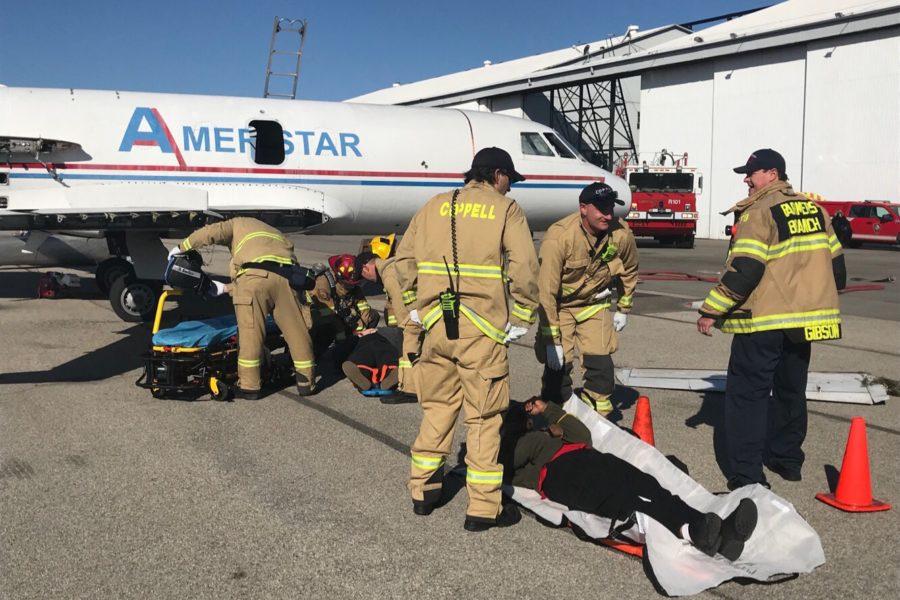Coppell Fire Department prepares for possible disaster by staging catastrophes
Photo courtesy Hannah Cook, Coppell communications specialist
Coppell Fire Department joined local emergency response teams from March 20-22 to practice mass casualty exercises in the event of a large scale disaster. These mock accidents included a plane crash, crowd being struck by a vehicle and an active shooter.
March 29, 2018
Local residents may have been concerned to see ambulances and fire department personnel gathered at certain locations around the area last week, carrying victims splattered in blood.
The situation was merely a mass casualty exercise – a staged practice in case large-scale disaster really hits. The Coppell Fire Department was one of the participants, as they typically engage in some kind of casualty exercise every year.
Representatives from more than 28 local organizations – including fire departments, police departments, hospitals, schools and transportation services – participated in the exercises. Area residents also volunteered to serve as the “victims” in the simulations.
Collaborating with organizations in other areas is important for the Coppell Fire Department because they do not interact with other towns’ departments often, and they must ensure they can cooperate if a catastrophe occurs.
“If we ever have a big disaster, we know that just the city of Coppell won’t be able to handle it, we’ll be drawing help from our neighbors,” Coppell Fire Department division chief Tim Russell said. “The more we are training with them, the better we’ll be able to communicate with them.”
On March 20, there was a mock transportation accident at the Addison Airport, with a plane hitting a bus. The following day, at Alfred J. Loos Athletic Complex Field House in Addison, an active shooter situation was staged. A vehicle crashing into a crowd at R.E. Good Soccer Complex in Carrollton was practiced on March 22.
The exercises were as realistic as possible, with the acting victims wearing makeup to mimic injuries.
“The only thing you can’t replicate that happens in real life is the unknown,” Irving Fire Department assistant chief Jack Taylor said. “If you have a training evolution coming up, you have it scheduled, you have to coordinate with all the participants so they are ready for it and able to attend. In an actual situation, you don’t know when it’s coming. The call comes and you have to respond now.”
The goal is to carry out the exercises in an orderly fashion, with minimal chaos. However, that was not always accomplished.
“Sometimes it was hectic, and sometimes it went very smoothly, depending on who was in charge and which group it was,” Russell said. “That’s why we’re training, because it gives practice to those who are a struggling or are being chaotic. One we’re done, we immediately critique everything.”
Practice and cooperation were not the only benefits of the simulations. Because of the exercises, the Coppell Fire Department discovered there are a few places their radio systems are unable to communicate with, since they do not operate on the same channels. They are now working on a solution to this issue.










